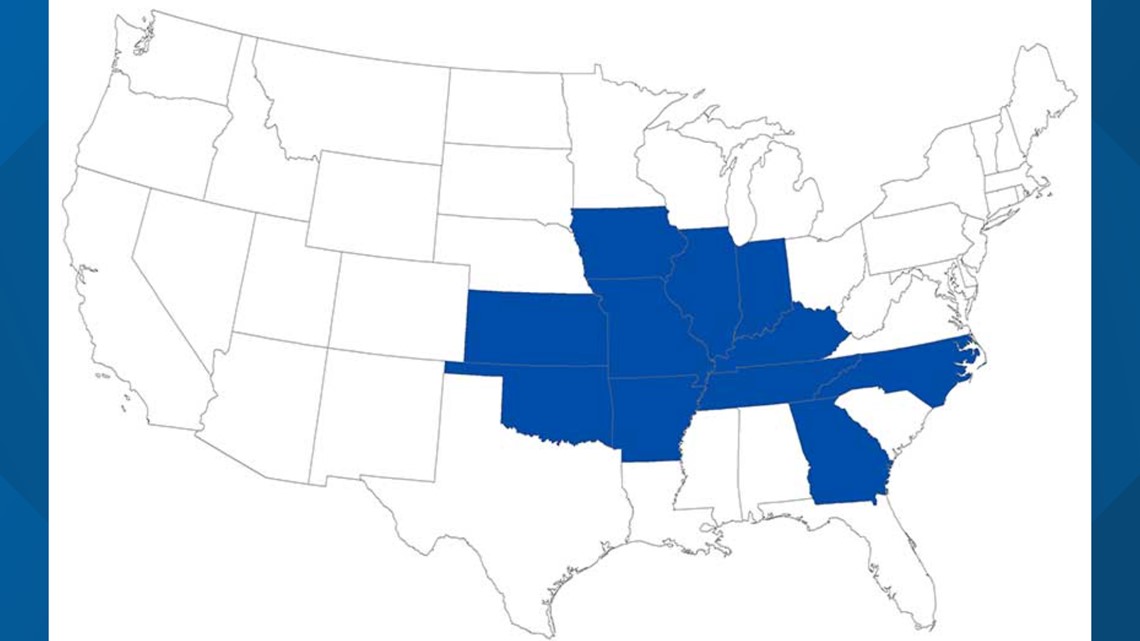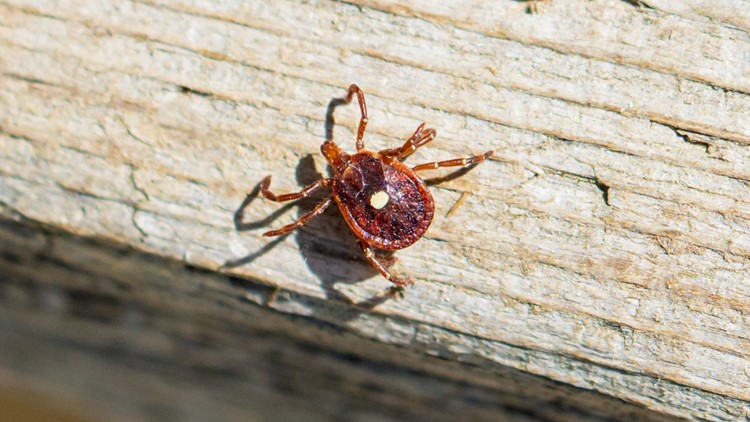If you're planning to spend time outdoors this spring and summer, you may wanna keep that bug spray within reach. A disease that can infect humans has been reported in ticks across several states including Kentucky and Indiana.
A recent study by Emory University researchers found that the Heartland virus has been spreading among lone star ticks in Georgia, confirming reports that the tick-borne Heartland virus disease can spread to other parts of the U.S.
Out of 10,000 ticks sampled, the results of the study found that one out of every 2,000 ticks had the Heartland virus.
Heartland virus was first detected in 2009 when two men from Missouri developed symptoms commonly associated with tick-borne illnesses.
Symptoms of tick-borne illness:
- High fever
- Diarrhea
- Muscle pains or aches
- Rash
- Low counts of white blood cells and platelets
The Centers for Disease Control and Prevention said since 2021, there have been 50 cases of Heartland virus disease found in people across 11 states including Kentucky, Indiana and Tennessee.
Many of the cases were severe enough to require hospitalization and a few individuals with other health issues have died. However, researchers say that the actual disease burden is believed to be higher since the Heartland virus is still not well known and tests are rarely ordered for it.


Those who are often outdoors, either for work or recreational activities, are at most risk of contracting the disease.
“Lone star ticks are so small that you may not feel them on you or even notice if you’ve been bitten by one,” Steph Bellman, a co-author of the study, said.
Lone star ticks can be identified by the distinctive white spot on its back. When fully grown, they can be barely a quarter-of-an-inch size in diameter.
If you plan on being outside in wooded areas or areas with tall grass, be sure to wear a long shirt and long pants tucked into long socks. For extra protection, seal the top of the socks with duct tape.
Be sure to use bug spray and conduct a visual check for ticks before and after your time outside.
►Make it easy to keep up-to-date with more stories like this. Download the WHAS11 News app now. For Apple or Android users.
Have a news tip? Email assign@whas11.com, visit our Facebook page or Twitter feed.
Other top stories on WHAS11.com



